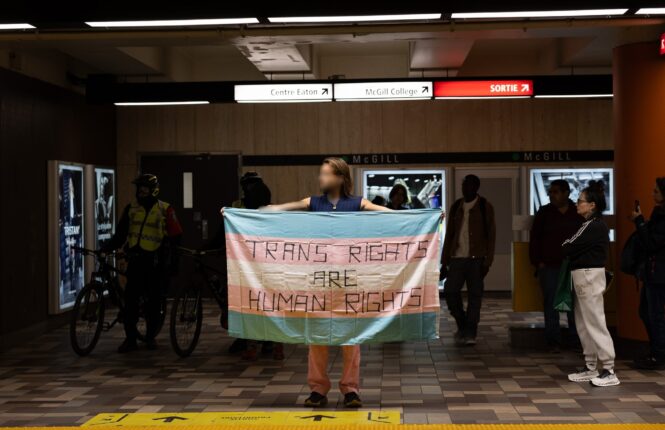Bananagrams is a word game that has recently grown increasingly popular with the university student crowd. The game is reminiscent of Scrabble, but is played at a much faster pace. Each player takes a certain number of letter tiles from the ‘bunch’ in the centre of the table, and attempt to make a sort of crossword from them. Players keep taking tiles from the ‘bunch’ as they use them up, while keeping pace with whichever player is using up their tiles the fastest. Once there are no tiles left in the ‘bunch,’ the first player to use up their remaining tiles is the winner—provided the crossword passes inspection from the rest of the players. The McGill Tribune recently had the opportunity to interview Rena Nathanson, co-inventor—along with her father, Abe Nathanson—and president of Bananagrams. She provided much insight into the history of the game, the family that started it all, and why it appeals to university students.
McGill Tribune: How involved was everyone when it came to creating the game? Did each member have a different role?
Rena Nathanson: We were all game testers! The rules came about through discussion. Pretty much everything in our family comes about through discussion. Everyone talks about everything a lot. Is this too hard? Is this too easy?
MT: How long did it take to make the game?
RN: [It happened] pretty quickly I would say six months to a year, from the idea that we had something [that people would want to buy], to having a finished product in our hands. Yeah, it was very fast. We lucked out and found suppliers very quickly who could do what we wanted.
MT: I understand that you consider things like cost and portability to be key components to the game. What made you focus on those aspects specifically? How else did you personally refine the game?
RN: Well, we looked at the market, studied other games out there, and wanted to make it affordable. We didn’t want to keep anyone from buying it. We wanted a broad spectrum of customers. Portability—that was a challenge, because a lot of big companies wanted to put it in a box; and they [wouldn’t manufacture the game otherwise.] But ultimately, they knocked on our doors, and said ‘okay, we’ll have it as it is.’ So portability was very key. It was also a very conscious ecological decision. We didn’t want more plastic and cardboard in the world.
MT: How was the 2006 London Toy Fair [the first showing of Bananagrams]?
RN: That was crazy! I was in London, and my parents flew out for it. My kids helped: they came in banana costumes. We took orders from the moment the doors opened. We were not expecting it!
MT: What is so special about Bananagrams? What makes it different?
RN: I think, the portability, the playability, and [the fact that the game] is really fast. You can play one hand in five minutes; and I think the idea of no pencil, paper, board, scoring, is really attractive, particularly to a younger audience. They don’t get disheartened if they don’t win a match, so it’s very addictive and encouraging for kids as well. Also, what I think is very special about it is that, it can be played with people of different ages at the same time. I don’t think I can think of another game where everyone can play and still enjoy themselves [equally].
MT: How long did it take for the game to expand the way it did? I understand that you didn’t use any heavy advertising, a national sales force, or the help of being in the large retail stores. Was it all word of mouth?
RN: [It took] probably about two to three years. It went very fast. Because I think one person buys it, plays it with five or six people, then they all want it. It’s kind of a pyramid game. So we were very fortunate that we hit the perfect forum with it.
MT: Your father had said that he didn’t want to do business with the large retail stores, such as Toys “R” Us and Wal-Mart. Is this something that will remain true as the company develops?
RN: Yes and no. We won’t do discount stores. We are commencing with Target, [and are] just about to commence next year with Toys “R” Us. We have found that we kind of have no choice. I think we have timed it carefully and it was a very conscious decision to not lift everything very quickly, and control the entry into the world with the independent [stores] and then with the larger stores. We wanted to be, and still [want to] be, loyal to all our independent retailers who have all been loyal to us as well. But there comes a point where, as a business, you have to grow.
MT: What does the future of Bananagrams look like? With electronic technology being such a big part of everyone’s lives, how do you see Bananagrams adapting to that?
RN: We have an app that we are in the middle of re-designing. We are very excited about re-launching [it]!
MT: Do you have any tips on being creative with the game, or different ways to enjoy it?
RN: Well, that’s another unique thing about us. We’re always open to suggestions on different ways to play the game. We have a blogspot on our website where people can post their ways of playing and adapting the game. And I think that’s one of the beauties of our games—you can make them your own.








